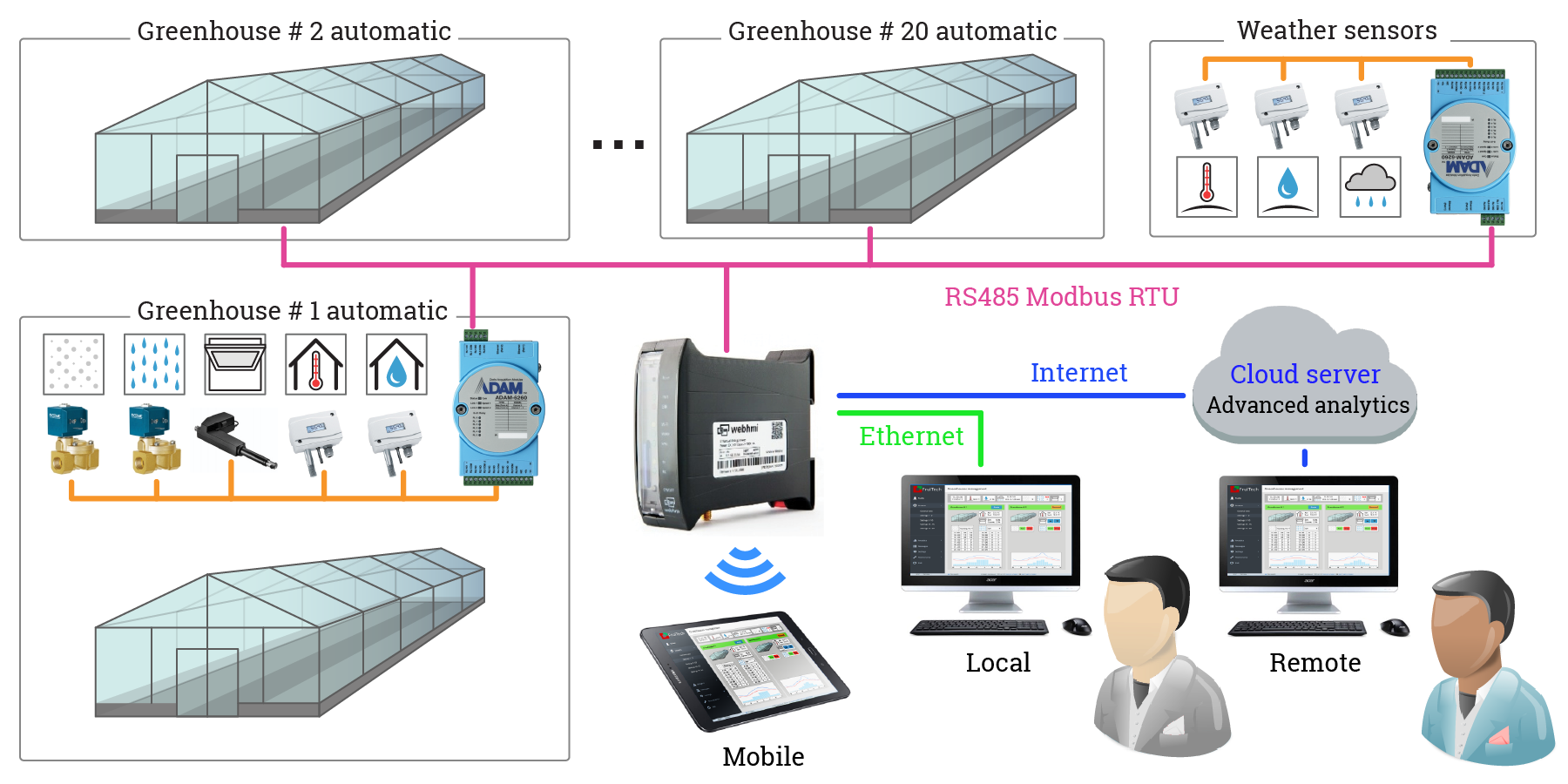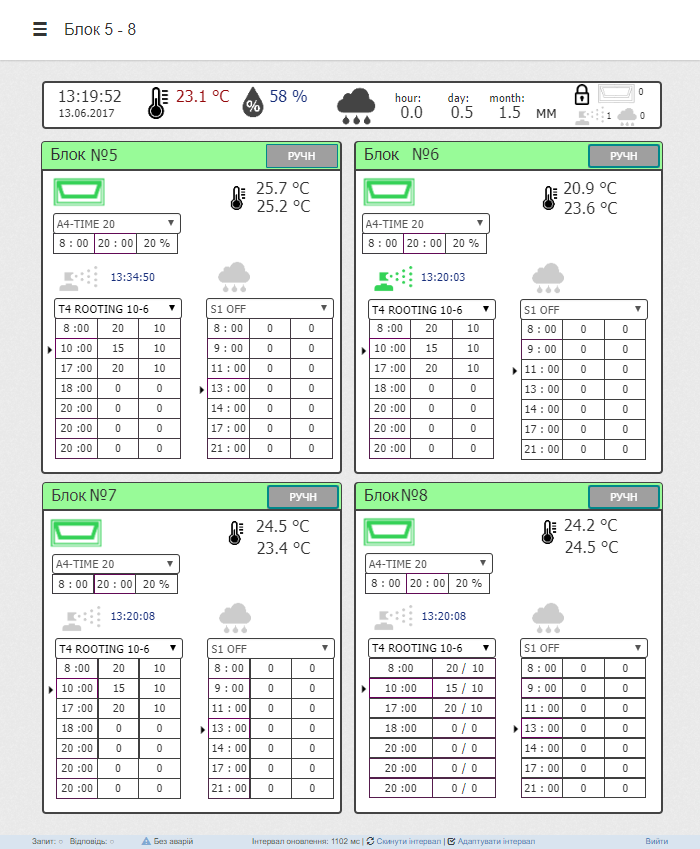
Monitoring system for greenhouses
Project description
One of our clients cultivating fruits and berry crops in greenhouses, asked for a greenhouse monitoring system.
For each greenhouse there were monitoring and control objects like: temperature and humidity sensors, irrigation/mist valves and window actuators.
Each valve and actuator would need schedule and recipe control and temperature control for actuators as well. The company were at decision point of what structure for the monitoring system to choose:
- Micro-controllers with “closed” communication protocol. The system integrator who has been using these controllers, offered application development service for the project. While the controllers made in Ukraine had attractive price, there were the cons too – high cost of application development and total dependency from the integrator.
- PLC plus HMI panel. The “minus” of this choice was that HMI panel can not handle multiple connections (neither many com ports nor com port with many network devices), so PLC might be only centralized one with expensive remote i/o (because each remote i/o base has its comm. module) or bulky cabling for signals from all greenhouses. The variant of “PLC + HMI panel” set for each greenhouse was also discarded as expensive one. (and still it would require some supervisory level).
- SCADA system with remote i/o. SCADA for the customer would mean selecting SCADA components, licensing, deicated PC for SCADA installation, long “learning curve” for deployment and project development, while the schedule for the project was tough, so some ready solution was being looking for.
- One of the criteria for selecting hardware was temperature and humidity sensors with 1-wire interface, that allowed to simplify cabling and to further reduce cost.
- Another important criteria was possibiblty for the custeorm to control each greenhouse at its locations, inside the premises with local HMI or tablet PC.
Deciding on system structure
After considering all the possibilities, taking into account simplicity, flexibility, scalability and cost, the best structure was found as centralized control of all greenhouses from one WebHMI integration controller and remote i/o with Modbus RTU RS-485 (produced by AKON) in each greenhouse. This structure met all the criteria.
The structure has the following advantages:
- WebHMI has all required features – compact hardware platform and SCADA on-board.
- Simple topology and cabling – one RS-485 cable is enough to span over all greenhouses.
- Scalability – to further expand i/o capacity it’s just enough to add another module to the bus.
- Simple HMI solution for each greenhouse – any mobile device would do the job, and easy HMI over internet as well.
The system structure with WebHMI
- Enclosures with remote i/o for 1-wire, actuators position and relay output for valves – in each greenhouse.
- Central enclosure with WebHMI module, remote i/o module for outside weather sensors (temperature, humidity, precipitation).

Operator interface

Advantages
- Non-excessive “all-in-one” solution – remote manual or automatic control for all greenhouses, recipes, graphs and reports, notifications, without PLC, HMI panels, server for SCADA.
- Easy access for operator in any greenhouse from mobile or tablet.
- Easy access from internet
- Due to remote service access feature, all commissioning tasks after equipment installation were done remotely.
- As a consequence of 1..4, the project was implemented in short terms with minimal expenses.